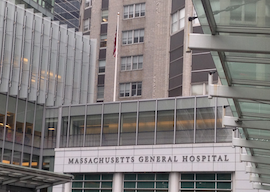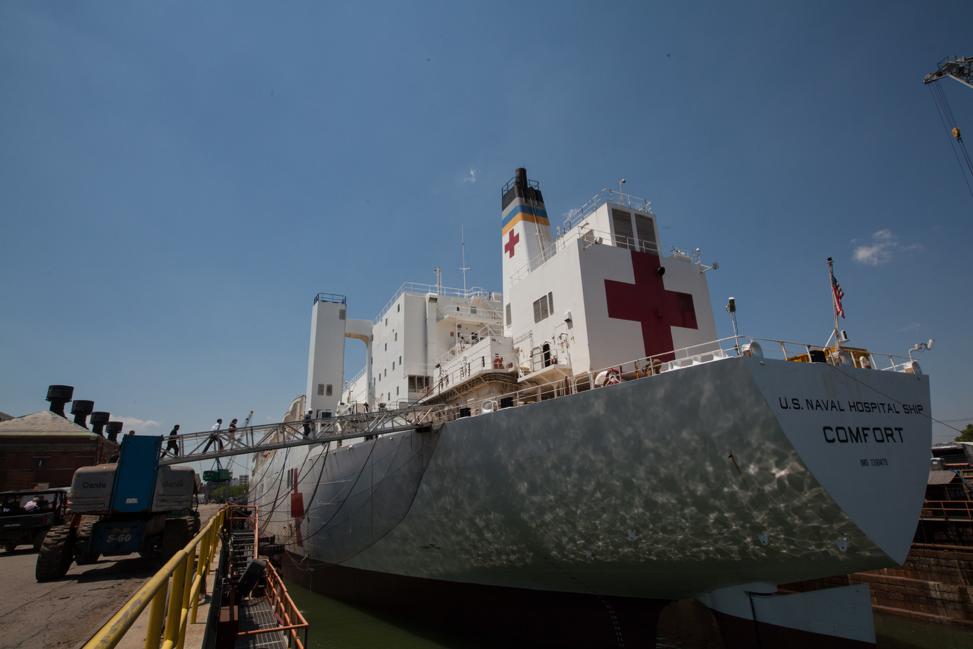
The USNS Comfort, one of two U.S. Naval Hospital Ships of its kind, was dry docked in Boston—directly across from our studio at 21 Drydock Avenue—for upgrades and repairs. Along with its sister ship, the USNS Mercy, the Comfort represents the second-largest class of ship in the U.S. Navy. Continuum was invited on June 12th, 2017 to send a team aboard to see the adaptations that make medicine at sea possible.
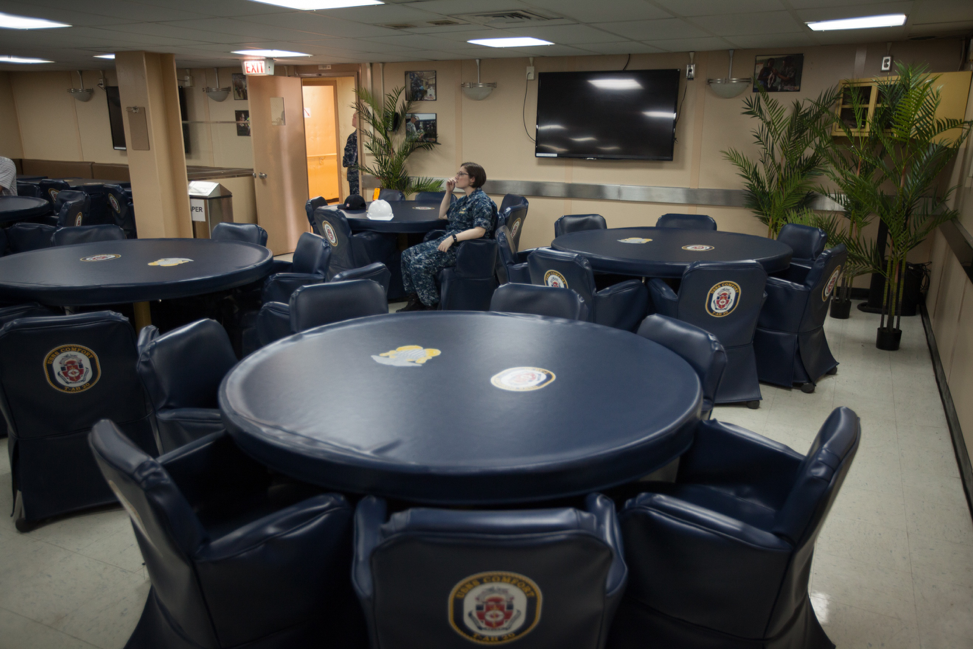
An officer awaits the official start of a tour in the officer's mess. The Comfort must be ready to sail anywhere on earth within five days of being ordered to, so the crew is divided into three rings or categories, each expected to arrive for service at different times within that span.
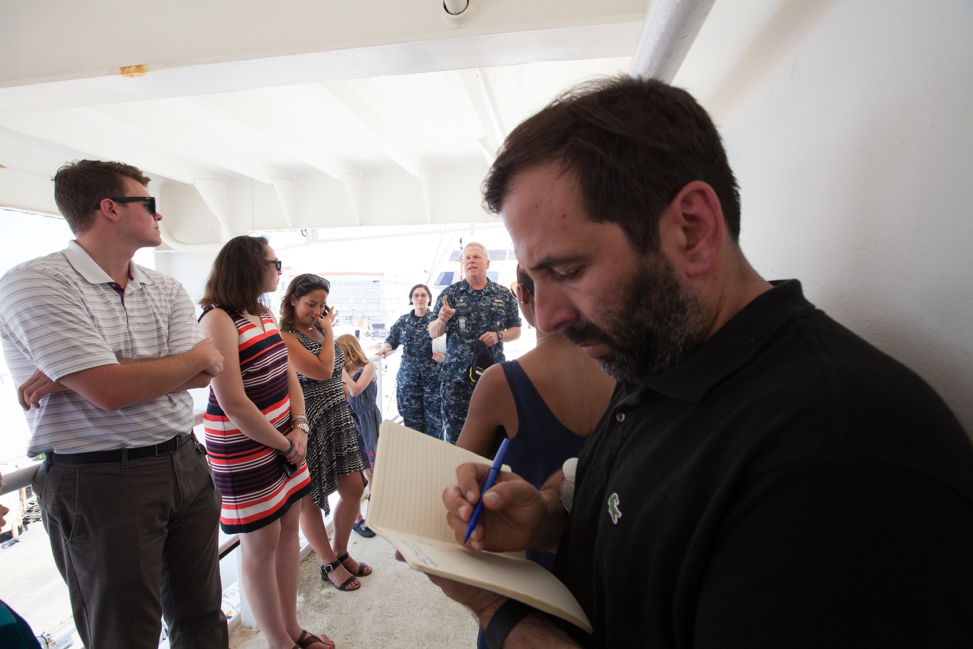
Continuum’s Ken Gordon takes notes as USNS Comfort Commanding Officer Captain Lanny Boswell gives an introduction before embarking on a tour of his ship. The Continuum team was joined by a Red Sox charity group, as well as some military recruiters.
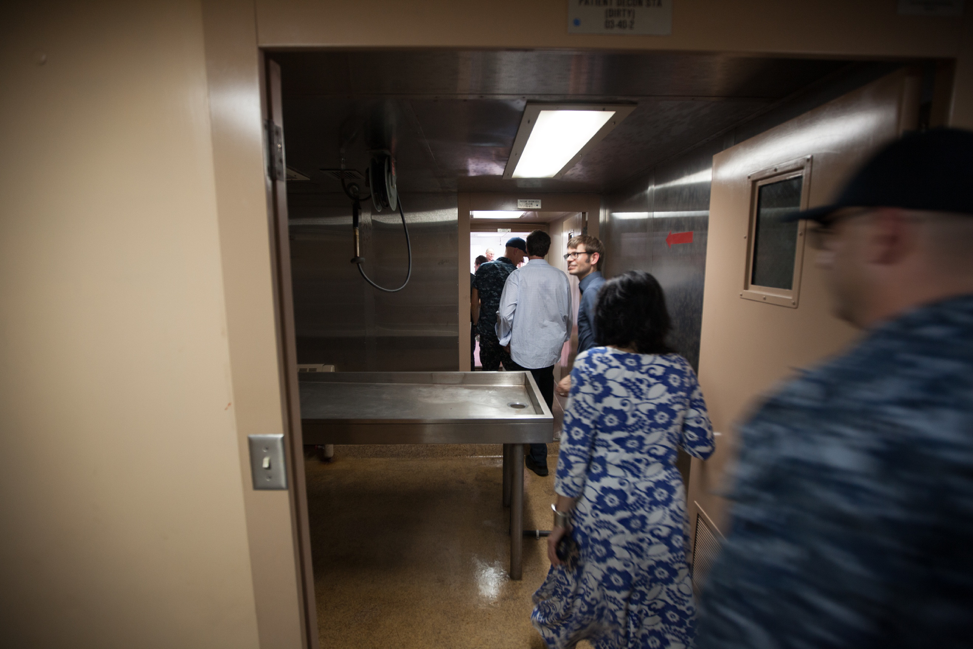
Continuum SVP Mike Dunkley passes through the decontamination unit near the flight deck. Because the Comfort can be dispatched to any disaster, natural or otherwise, the infrastructure must be able to handle a wide variety of hazards and challenges.
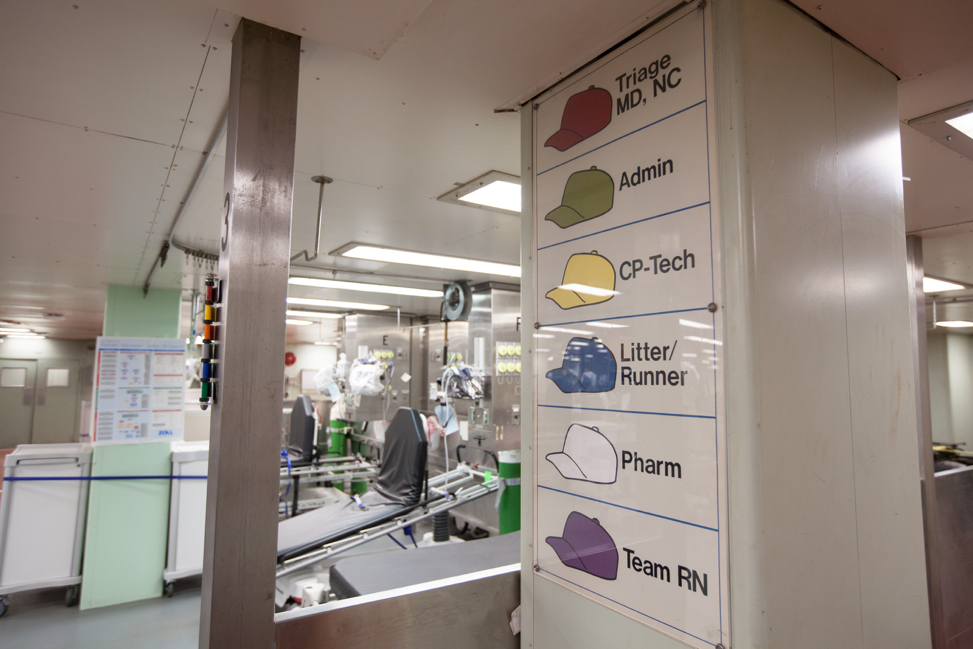
A legend below decks in the intake and triage rooms reminds crew who has what responsibilities. With an ever-changing staff that can include NGOs as well as military personnel, along with cramped quarters, organizing principles such as hat color can help improve clarity.

Captain Lanny Boswell explains the layout of the intake and triage section of his ship. From here, patients can be stabilized or forwarded on to imaging, surgery, or a ward, depending on their particular needs.
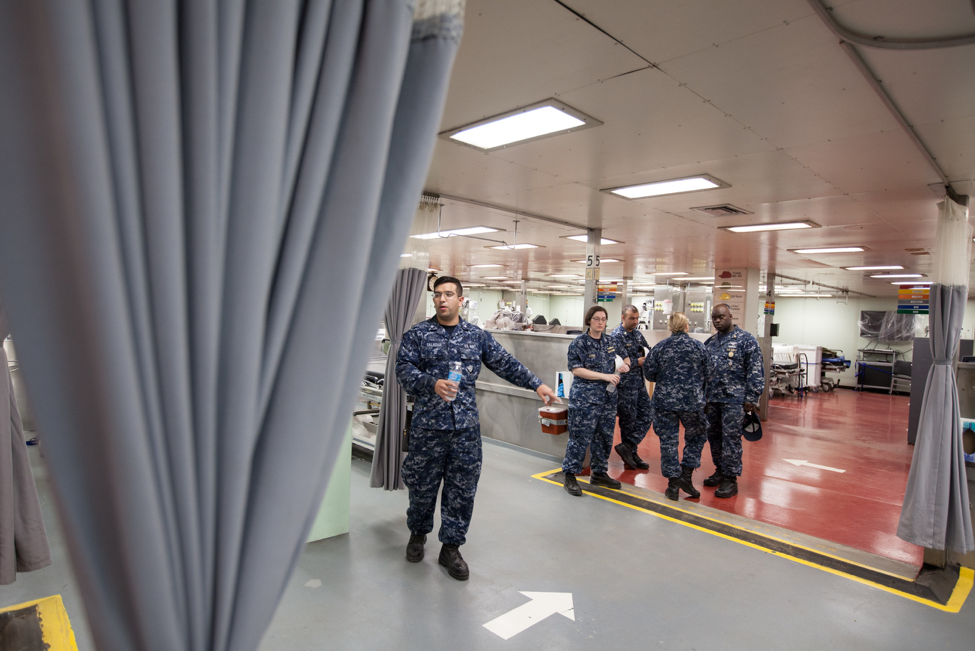
Crew members point out adaptations—such as the rubber guards that stop blood and water from running out of the treatment area in high seas—that allow them to perform medicine afloat.
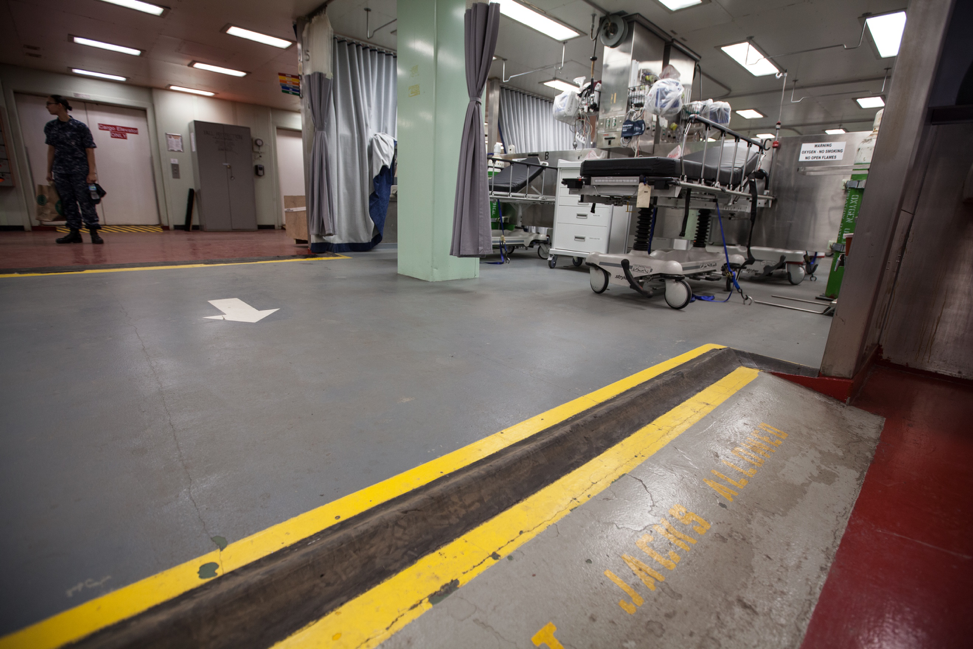
Rubber guards are set at the entrances to the Comfort’s initial treatment areas to contain spilled blood or water during high seas but, at the same time, allow the passage of gurneys.
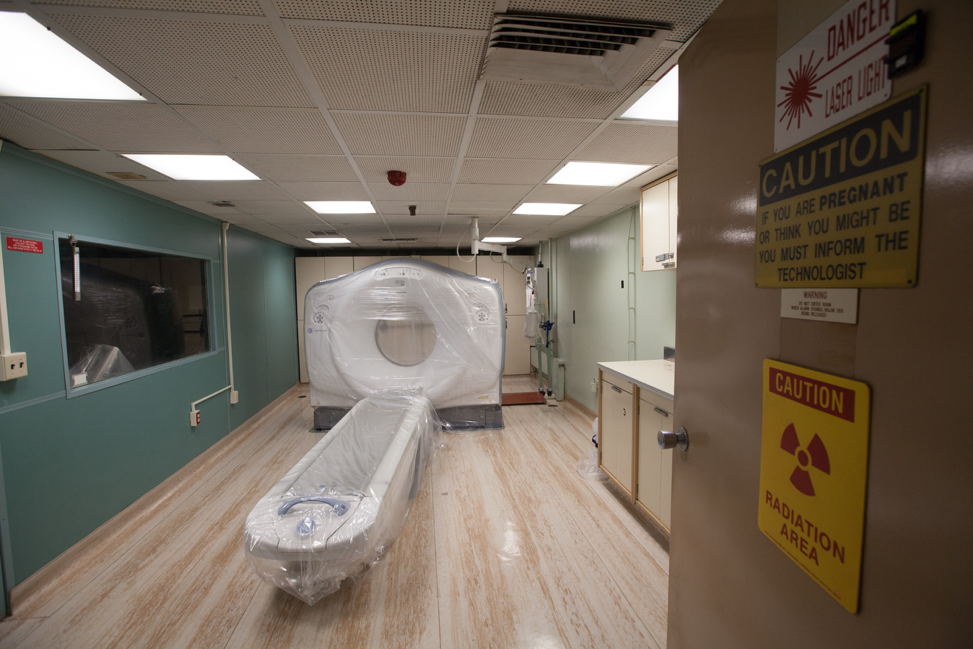
A CT scanner waits in the imaging center of the ship. The Comfort is a full-serve hospital, lacking only an MRI device and that only because its powerful magnets would warp the ship’s steel hull.
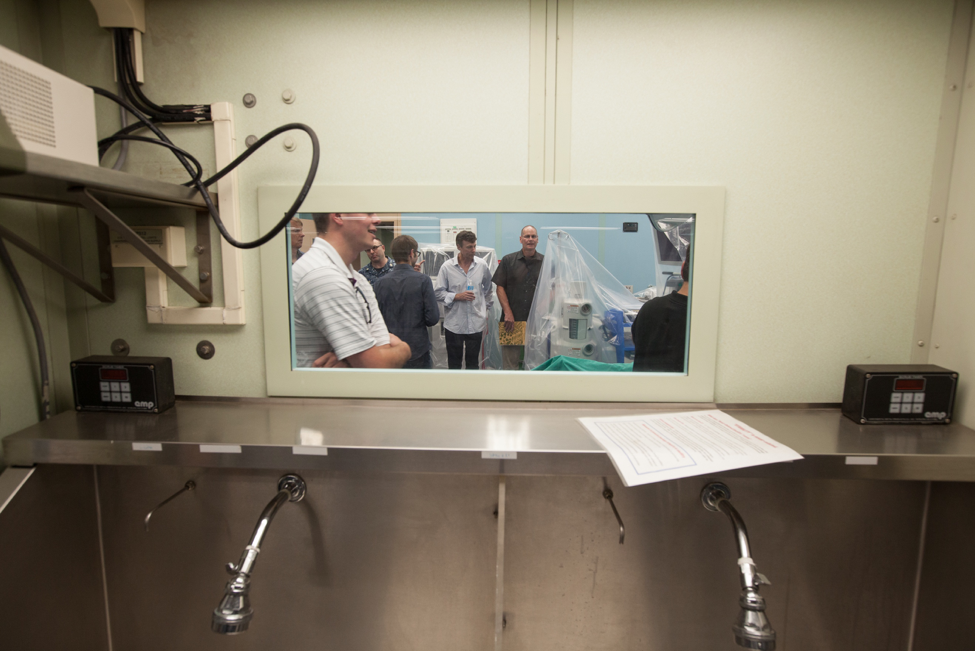
Continuum's team crowds into an operating room. Medical personnel are capable of carrying out multiple simultaneous operations when necessary, making the Comfort an essential part of the disaster relief that it is often deployed to help with.
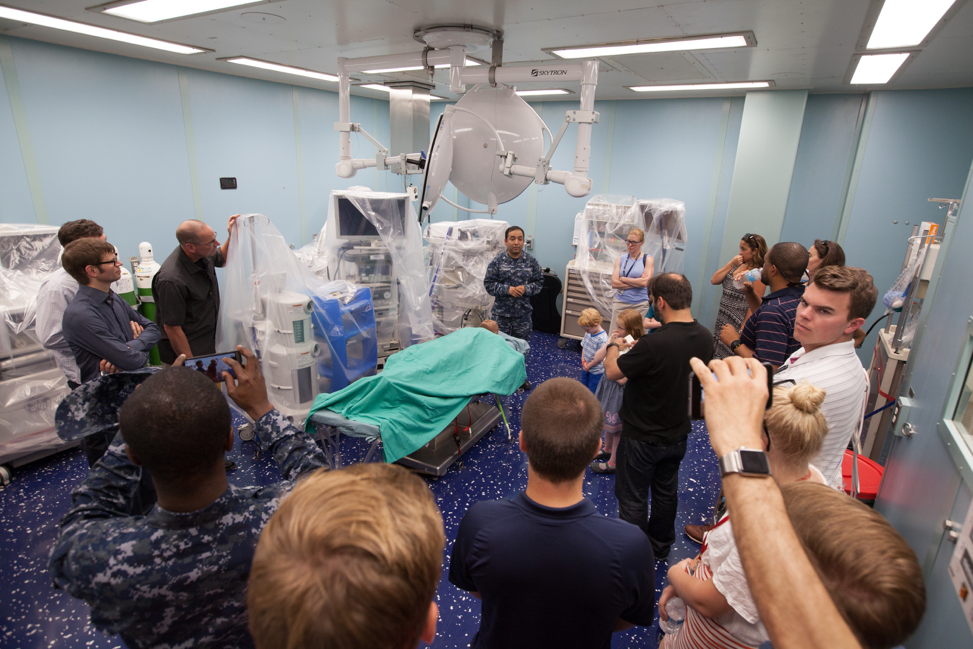
A crewmember describes some of the design considerations that went into creating the operating rooms, not least their placement on the midline of the ship to minimize the pitch and yaw experienced on rough seas.
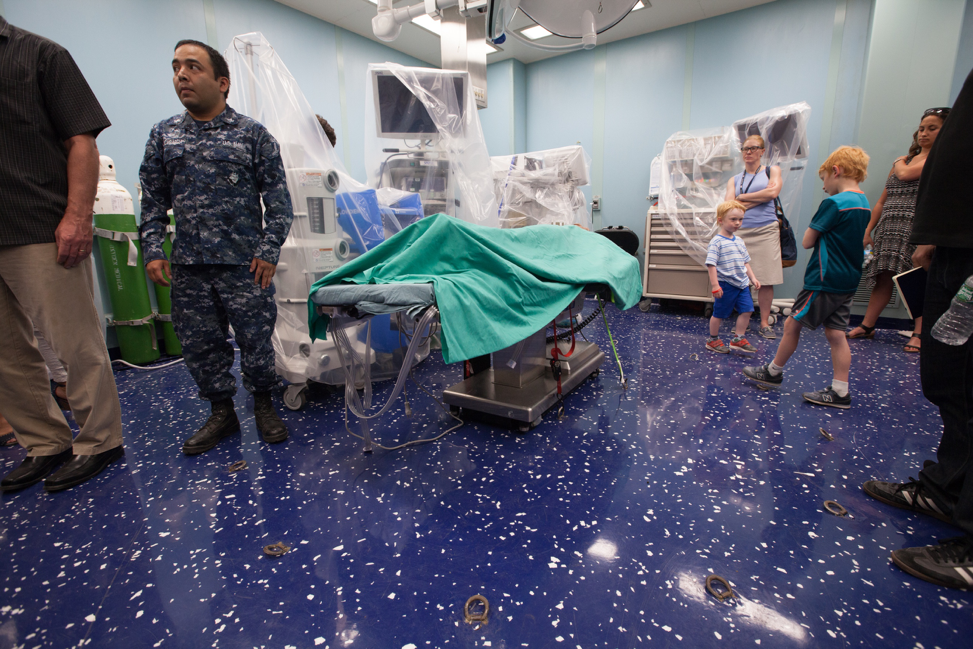
Walls and floors in key areas, like operating rooms, are covered in steel loops that are used to strap down equipment when at sea. Medical devices typically have wheels, a perfect adaptation for normal hospitals but a potential disaster when floors don't stay still.

Since the USNS Comfort is deployed on humanitarian as well as combat missions, it must be prepared for any situation or patient. There’s no telling ahead of time who will need assistance when the Comfort arrives at an event such as the Haiti Earthquake. Indeed, infant incubators like this one sitting in a hallway have made it possible for many babies to be born on board.
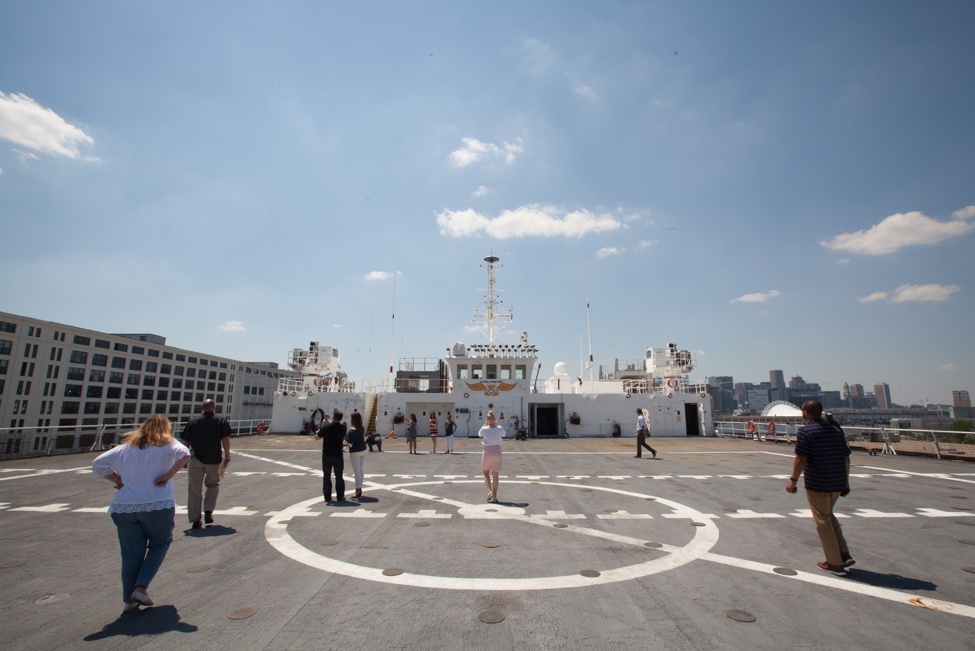
The immense flight deck is one of the main ways sick and wounded soldiers and civilians are brought aboard the hospital ship. The vessel is arranged around the flow from triage to treatment to recovery, with this deck functioning as the starting point.



